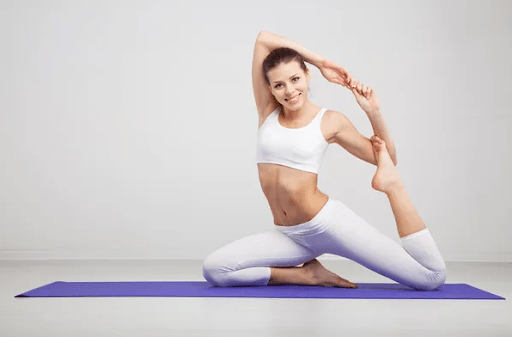Floor sitting improves posture and strengthens core muscles that aren’t used while sitting in a chair. It also helps to reduce back pain, joint degeneration, dowager’s hump and rounded shoulders.
Sitting on the floor enhances flexibility, promotes posture, and relieves tension. Visit https://www.mindandmotionpilates.com/ for more insights on wellness and fitness.
1. It Strengthens Your Core
Sitting on the floor requires you to support your own body weight, which stretches and strengthens your core muscles. It also helps to improve your posture and balance, as well as reduce that pins and needles feeling in your legs caused by sitting in chairs for long periods of time.
The ability to sit and rise from the floor without using a chair back or sofa is one of the ‘blue zones’ where people live longer lives. This is because getting up off the floor is a full-body movement that requires a high level of musculoskeletal fitness.
It also challenges you to keep your knees, ankles and hips aligned properly, which in turn can help prevent future joint problems. Developing these muscle groups can also make you a stronger and more resilient person overall.
2. It Strengthens Your Legs
Sitting on the floor, whether cross-legged or in a chair, provides opportunities to stretch the hips and legs. In addition, the position forces you to straighten the spine, reducing pressure on the lumbar area. Proper alignment also helps prevent slouching, which can increase back pain and stiffness.
You can strengthen your core musculature while you sit on the floor by engaging in regular movements such as tummy crunches, which will help to improve posture and reduce lower back pain. Plus, it’s easier to add movement to your daily routine than trying to fit in a 30-minute workout at the gym!
Make floor sitting a part of your daily routine to strengthen your body and boost the benefits of movement, which have been linked to a longer lifespan.
3. It Strengthens Your Hips
If you sit on the floor in a way that encourages good posture and avoids slouching, it can strengthen your core muscles and improve back and lower back flexibility.
Sitting on the floor also allows you to better stretch your hip flexors and relieves hip pain from prolonged sitting or slouching.
In addition, getting up and down from the floor forces you to support your own weight, which is a form of weight-bearing exercise which is essential for maintaining bone density.
As you age, it’s important to incorporate more weight-bearing exercises into your daily routine to help prevent osteoporosis. And, unlike other forms of movement that require a gym membership or expensive equipment, plopping down on the floor can get all your body parts moving no chair required.
4. It Strengthens Your Back
Sitting on the floor strengthens your back and improves posture and flexibility. It also helps prevent the pins and needles sensation in your legs that can occur from sitting too long in a chair.
It’s also a weight-bearing activity, which is essential for bone health. Bone mass peaks around age 30, so any weight-bearing exercise is good for keeping your bones strong. Getting up and down from the floor challenges your core and leg muscles.
This type of movement is a great way to incorporate healthy habits into your everyday routines and reduce the risk of injury as you get older.
Meet our instructor and discover about the benefits of floor sitting at mind and motion pilates for improved flexibility and posture.
5. It Strengthens Your Shoulders
Sitting on the floor may not be an option for everyone during work hours (although there are options). But it is an excellent way to strengthen your shoulders.
You can try straddle sitting, where you sit with your legs wider than shoulder-width apart, or you can kneel and rest the tops of your feet on the ground, which is often called seiza in Japanese culture.
They help you develop better posture and can ease back pain over time, he adds. Just make sure to check with your doctor or physical therapist before starting these poses if you have back or hip problems.
